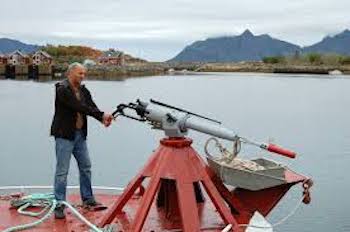A great many industries perpetuate themselves in large part by getting the public to buy into a narrative which is not reflective of reality. Clean coal, anyone? Often, they are even able to convince us that their contributions to our nation’s economic life are so important that government funding – your tax dollars – should go into supporting them. What these companies need you to believe and, more importantly, need you to not question, is what keeps them in existence. Sometimes long after we’ve come into the possession of facts which should doom them unequivocally. In these things, the whaling industry is certainly no exception. Whaling is a cruel and destructive industry built on a foundation of lies.
Let’s look at some of the big ones.
Big lie #1 – Whaling can be sustainable
This is both untrue and a red herring of the worst possible kind.
Even if we were to assume that whales are a commodity that can be harvested from the oceans, the recent actions of whaling companies make a strong case against sustainability. Scientists have for many years expressed concern about the numbers taken in commercial hunts by Norway, Japan and Iceland. As with any other business, there needs to be a certain amount of volume (in this case a certain number of whales killed and processed into saleable products) in order to turn a profit. And it costs money to maintain fleets, crew them, and run the entire operation.
If you want a hint as to whether whaling companies are being honest in their assessments of ‘sustainability’, consider that the methods they use to calculate numbers always result in more kills than would be allowed by methods used by scientists at the IWC. (The International Whaling Commission, or IWC, is the international governing body for whaling.) That’s because operations need to be profitable today, and it’s a secondary concern whether they will be well into the future.
Today, minke whales are the most hunted species in commercial whaling. This is in large part because they are not technically classified as endangered, and are doing relatively better than other large whales. But this does not mean they are common, and the key word here is ‘relatively’. There are still many things we don’t understand about their migration patterns and behaviors, and more research is needed. We certainly don’t know what kind of impact the killing of so many pregnant females by Japanese whalers in the Antarctic has had on the species’ reproductive capacity. But we do know that their numbers have declined significantly in the waters around Norway, where they are still hunted.
We also know that they, like ALL whale species, are tremendously impacted by all manner of human actions. These include plastic pollution, entanglement is fishing gear, ship collisions, and noise pollution that disrupts their communications and navigation. These are all difficult problems we need to address in order to help them. So why in the world would we not stop hunting them, as a logical first step? Letting whalers set their own quotas, with an utter disregard for the IWC moratorium most countries have respected since 1986, is completely irresponsible.
And we haven’t even begun to discuss what we now know to be whales’ ecologically-vital role in our battle against climate change. Only the most uninformed among us believes that we aren’t worse off now without the estimated three million whales we killed in the 20th Century.
Big lie #2 – Modern methods of killing are humane
This is, in a word, nonsense. Harpoons tipped with explosives don’t mean a quick painless death. Researchers in Norway have found that a whale will take several minutes to die after being struck, often even up to 25 minutes! Imagine taking that long to die, with metal fragments having exploded inside your body, as you try to keep yourself afloat to avoid drowning. This is a level of cruelty we don’t tolerate in our slaughter houses, and though no one could make the case that the way animals are treated on our factory farms is humane, what whales (and dolphins) killed at our hands suffer routinely is far, far worse.
Big lie #3 – The consumption of whale meat is an environmentally-friendly alternative
It’s absolutely true that the cows we raise for food produce enormous amounts of methane, a gas which significantly contributes to heat retention in our atmosphere.
But offering whale meat as a more eco-friendly option is sheer lunacy. We now understand very well how whales play an essential role in the removal of carbon from the eco-system. Also that their feces is critically important in nourishing the growth of phytoplankton, which produce oxygen and absorb carbon dioxide. Not to mention forming the basis for the entire food chain which means healthy oceans. There is absolutely nothing about whaling that is environmentally friendly. Just another argument which is sheer nonsense.
Big lie # 4 – Eating whale meat is a traditionally important source of protein in whaling nations
Even with marketing hype from the industry, and in some cases government promotion urging people to eat more whale meat, both in Norway and Japan, the numbers of people who actually consume it regularly are tiny, and falling fast. A study commissioned by Whale and Dolphin Conservation and partner organizations in 2020 found that “only 4% of the Norwegians surveyed said they often eat whale meat… [and] two thirds said that they had never tried it before or tried it a very long time ago.” Hardly a ringing endorsement of whale meat as an essential part of the Norwegian diet. Surveys in Japan and Iceland have produced similar results, and in those countries the rate of consumption has fallen dramatically in the last ten to twenty years.
Also, I can’t resist mentioning that even if something actually is traditional, it doesn’t mean you ought to keep doing it. We change our views as we learn, and our customs and practices evolve. Eating whales wouldn’t be a good idea even if it were ‘traditional’, which it is not.
Big lie #5 – It’s none of the world’s business, as whaling nations mostly hunt their own territorial waters, so they are essentially killing ‘their’ whales
Minke whales are currently the most widely hunted species. Like many other whales, they are migratory, and spend only part of the year where they are hunted. They certainly are not local to the territorial waters of any nation. And they can’t conceivably belong to Japan, to Norway or to any other country that claims to own them. Even if you could make a moral case for owning such a being.
We must also consider the short-sightedness of treating whales as a resource to be exploited for your own nation’s benefit, given their importance to everyone else on Earth. This is not overstatement or exaggeration. For someone’s short-term financial gain, we all pay a price in that our common need to combat the existential threats of biodiversity loss and climate change are seriously compromised. We find ourselves at a critical moment in our history, hovering around the tipping points which may determine whether we ourselves will succeed or fail as a species. Whether we all need global whale populations to recover is not in question.
To make this situation even more incomprehensible, commercial whaling today is practiced exclusively by some of the most prosperous nations on the planet – Japan, Norway and Denmark (sorry Denmark, what happens in the Faroe Islands is on your watch, so I have to include you on this list). Another might be Iceland, though there is good reason to believe that Icelanders have now seen the last of whaling. But we can take economic necessity off the table as a justification.
OK, so in case we don’t have enough yet, let’s circle back to what I said earlier about the sustainability argument being a red herring. I believe that the best argument against whaling is simply this: you can’t make a morally defensible argument for killing an animal whose cognitive skills and social intelligence may be on a par with your own. Cetaceans (dolphins especially and most obviously, but really all cetaceans, in all probability) are among the most high-order species. In the end, it wouldn’t really matter if the supply of whales were inexhaustible, and if we could find a painless and humane way to kill them. The act itself is inherently wrong.
We are now in the early stages of recognizing personhood rights for animals that meet certain specific criteria, and it’s about time. In Canada the recently introduced ‘Jane Goodall Act’, should it become law, would move us closer to legal standing for certain species. These would include, but not necessarily be limited to: whales and dolphins, elephants and great apes.
Such legislation is the proper course of action for a 21st century society. Whaling is an archaic, destructive, monstrously cruel and indefensible relic of the past. It has no place in our world.
For The Orca’s Voice,
Phil, Canadian Cetacean Alliance



Leave a Reply